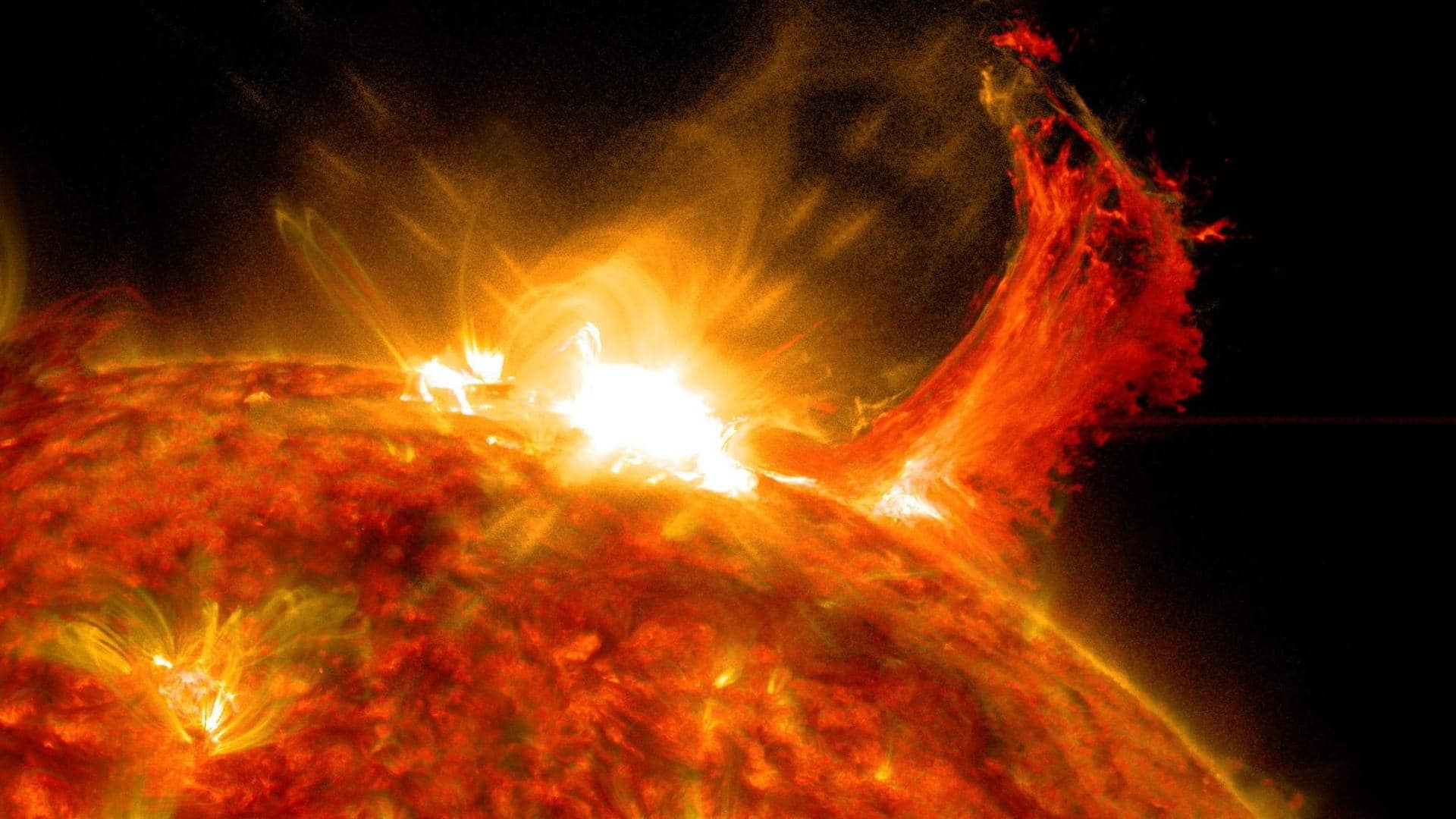
Coronal Mass Ejection heading toward Earth after massive solar eruption
What's the story
The Sun appears to be in a very active state. On Thursday, it was reported that sunspot AR3296 exploded, setting off solar flares which caused radio blackouts on Earth, particularly over Africa. The solar flare eruption is said to have expelled what's called a Coronal Mass Ejection (CME), which might strike Earth's atmosphere in the coming days.
Context
Why does this story matter?
The Sun is very active these days and is expected to reach the peak of its current solar cycle in 2024. Fortunately, the Earth's magnetosphere, ionosphere, and atmosphere do a good job of shielding us from harmful space weather. And this isn't the first time we received CME alerts this year. A CME was expected to strike Earth in February.
Report
AR3296 shot out an M3.9-class solar flare
The sunspot AR3296 shot out an M3.9-class solar flare on May 4, as per spaceweather.com. But what are these solar flares? They are enormous explosions on the Sun that expel energy, light, and high-energy particles into space, per NASA. Broadly speaking, solar flares are classified as A, B, C, M, and X. A-class flares rank the weakest while X-class are the most intense.
CMEs
CMEs are the most powerful explosions in the solar system
Sometimes, solar flares are accompanied by CMEs, which is exactly what happened on May 4. Multiple overlapping CMEs were released into space shortly after the explosion. CMEs are massive blobs of radiation and particles from the Sun that occur when the magnetic field lines of the star suddenly reorganize. Solar flares and CMEs are the most powerful explosions in our solar system, per NASA.
Auroras
The CME might "pass close to Earth" on May 7
The CME sparked by the solar flare yesterday "might pass close to Earth on May 7, with either a near miss or a glancing blow," according to spaceweather.com. If a CME reaches Earth, it can produce a geomagnetic storm, which can exhibit both positive and negative impacts. Geomagnetic storms result in visually stunning auroras but they can also disrupt navigation systems and satellites.
Information
Will the CME strike Earth's atmosphere?
At the moment, it is uncertain if the CME will strike Earth's atmosphere or if it will pass by but the National Oceanic and Atmospheric Administration (NOAA) is closely tracking the CME. Skywatchers at high latitudes must look out for auroras.